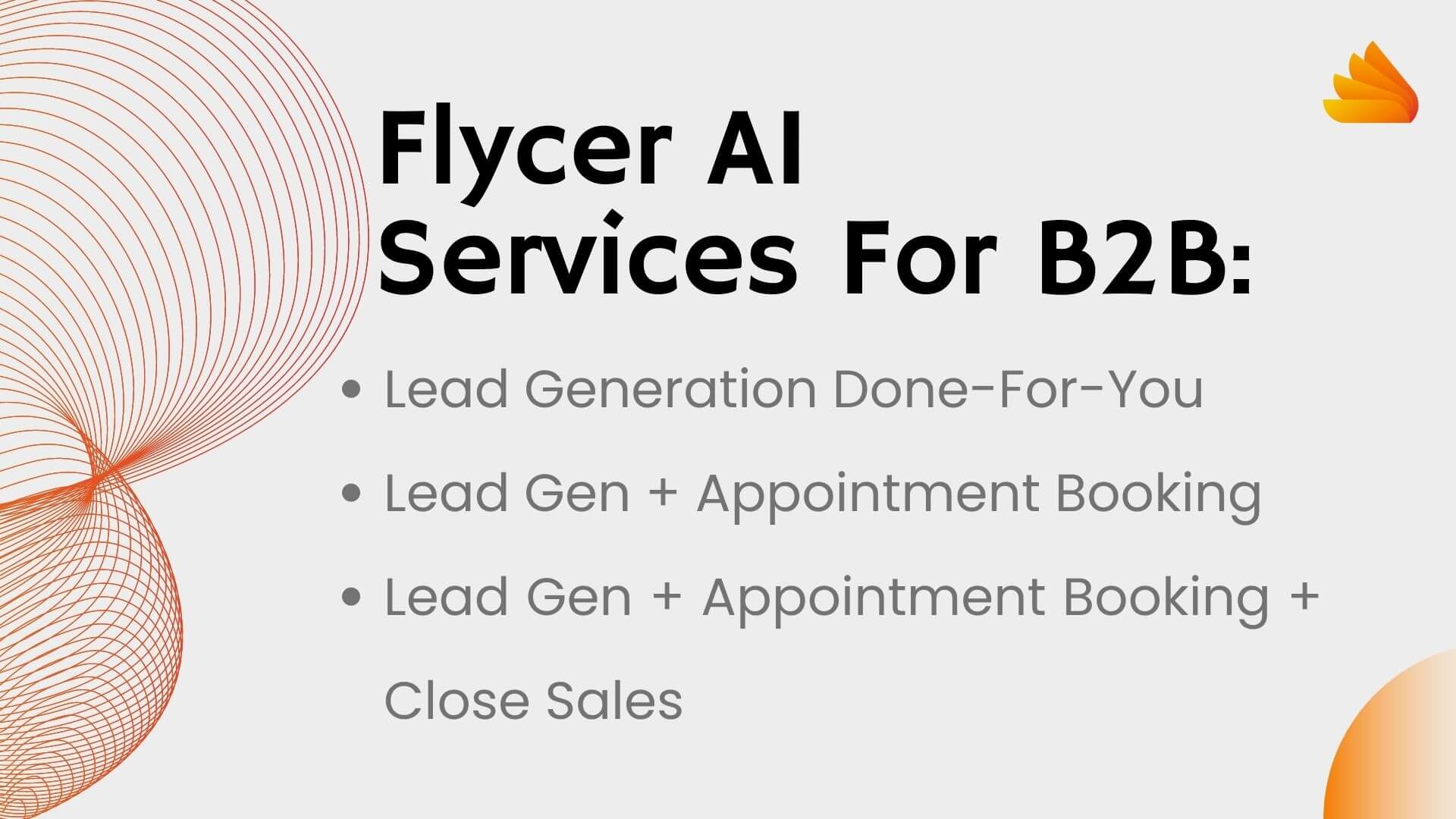B2B lead generation is the process of identifying and nurturing potential customers for your business. It is an essential component of any successful marketing strategy as it helps companies generate sales leads, increase brand awareness, and ultimately drive revenue growth. Developing a comprehensive B2B lead generation strategy requires careful planning and execution.
There are multiple approaches that companies can take to attract and engage potential customers, some of which are more effective than others. In this article, we will explore the best B2B lead generation strategies that companies can use to achieve success in their marketing efforts.

Benchmarking Your Current Performance
Before developing a B2B lead generation strategy, it is important to benchmark your current performance. This involves evaluating how well your business is currently generating leads and identifying areas for improvement. There are several key metrics that you should track when benchmarking your B2B lead generation performance.
These include conversion rates, website traffic sources, email open rates, click-through rates (CTR), and social media engagement levels. Once you have identified areas for improvement in these metrics, you can begin to develop a strategy that addresses those weaknesses while also leveraging existing strengths.
Setting Clear Objectives
The next step in developing a B2B lead generation strategy is setting clear objectives. This involves defining what you want to achieve through your marketing efforts and establishing specific goals for each objective. Examples of objectives might include increasing website traffic by 20%, boosting conversion rates by 10%, or generating 100 new leads per month.
It is important to ensure that all objectives are measurable so that progress can be tracked over time. Once objectives have been established, they should be communicated clearly throughout the organization so that everyone understands what they are working towards.
Identifying Your Ideal Customer Profile (ICP)
One of the most critical components of a successful B2B lead generation strategy is identifying your ideal customer profile (ICP). This involves defining the specific characteristics of your target audience, including their industry, company size, job title, pain points, and purchasing habits.
By understanding your ICP, you can develop highly targeted marketing campaigns that resonate with potential customers. You can also tailor your messaging to address their specific pain points and challenges more effectively.
Conducting Market Research
To develop a successful B2B lead generation strategy, you need to have a deep understanding of your target market. This requires conducting thorough market research to gain insights into industry trends, competitive landscapes, and customer preferences. There are several ways to conduct market research for B2B lead generation.
These include analyzing data from industry reports and surveys, conducting interviews with key stakeholders in your target market, and monitoring social media conversations about relevant topics. By conducting effective market research and using those insights to inform your marketing campaigns, you can build stronger relationships with potential customers and ultimately drive more sales for your business.
Creating Buyer Personas
Once you have identified your ideal customer profile (ICP) and conducted thorough market research, the next step is creating buyer personas. Buyer personas are fictional representations of your target customers that help you better understand their motivations, concerns, preferences, and behaviors.
By creating detailed buyer personas that align with the needs of your target audience, you can personalize your outreach efforts more effectively. This can include developing targeted content marketing campaigns or tailoring sales pitches for individual prospects based on their specific pain points or interests.
Overall successful B2B lead generation strategies require careful planning and execution. By benchmarking current performance metrics as well as setting clear objectives it becomes easier to identify the right approach tailored towards identifying an Ideal Customer Profile (ICP), Conducting Market Research aimed at gathering useful insights on competitors landscape as well as relevant trends, and creating Buyer personas that help personalize outreach efforts.

Understanding B2B Lead Generation
To start, let’s define what B2B lead generation means. Essentially, it is the process of identifying potential customers or clients for your business and then nurturing those leads over time until they become paying customers. This differs from B2C lead generation in that the target audience is other businesses rather than individual consumers.
The importance of B2B lead generation in business growth cannot be overstated. Without a steady stream of new leads, businesses can stagnate and fail to achieve their growth goals.
The process of generating high-quality leads requires a combination of research, strategy, and tactics that are tailored to your specific business. Now, let’s take an overview look at some of the B2B lead generation strategies you can use:
Content Marketing
One highly effective method for generating leads is through content marketing. This involves creating valuable content that solves problems for your target audience and publishing it on your website or other platforms where they will find it. For example, if your business sells software to help small businesses manage their finances more efficiently, you might create a series of blog posts on topics like “5 Tips for Managing Your Business Finances” or “How to Choose the Right Accounting Software.” By providing this type of valuable information for free, you build trust with potential customers and position yourself as an expert in your industry.
Social Media Marketing
Another key strategy for B2B lead generation is social media marketing. Platforms like LinkedIn and Twitter can be highly effective channels for reaching decision-makers at other businesses and building relationships with them over time.
To succeed on social media, it’s important to have a clear strategy in place that focuses on delivering value to your followers rather than simply promoting your own products or services. This might involve sharing news articles related to your industry or providing helpful tips that address common pain points for your target audience.
Search Engine Optimization (SEO)
SEO is another critical component of any successful B2B lead generation strategy. By optimizing your website and content for relevant keywords and phrases, you can improve your search engine rankings and attract more organic traffic over time.
To do this effectively, you’ll need to conduct keyword research to identify the terms that potential customers are searching for most frequently. You’ll also need to ensure that your website is fast-loading, mobile-friendly, and easy to navigate so that visitors stay engaged once they arrive.
Email Marketing
Another effective way to generate leads is through email marketing. By building a targeted list of prospects who have opted in to receive communications from your business, you can nurture those leads over time with targeted messaging and offers.
To succeed with email marketing, it’s important to segment your list based on factors like job title or industry so that you can deliver tailored messages that speak directly to their needs. You should also invest in high-quality copywriting and design to ensure that your emails stand out from the hundreds of others flooding their inbox every day.
Account-Based Marketing (ABM)
Account-based marketing (ABM) has become an increasingly popular strategy for B2B lead generation in recent years. This approach involves identifying key accounts or clients that are a perfect fit for your business and then creating highly personalized campaigns designed specifically for them.
To execute an effective B2B lead gen ABM campaign, you’ll need to conduct detailed research on each target account so that you can understand their pain points, goals, and challenges. You’ll then develop messaging and content tailored specifically for each account before executing outreach efforts across multiple channels including email and social media.
B2B lead generation is a complex process that requires careful planning and execution. By using a combination of strategies like content marketing, social media marketing, SEO, email marketing, and ABM, you can generate high-quality leads that will help your business grow over time.
Understanding Your Target Audience
Identifying your ideal customer profile (ICP)
When it comes to B2B lead generation, identifying your ideal customer profile is critical. An ICP is a detailed description of the type of company that would be the best fit for your product or service.
It should include information like company size, industry, location, revenue, and other characteristics that are important to you. Identifying your ICP helps you focus on the most promising leads and saves you time and resources by avoiding companies that are unlikely to convert.
Conducting market research to understand your target audience’s needs and preferences
Market research is essential for understanding the needs and preferences of your target audience. It involves gathering information about the market, competitors, customers, and industry trends.
Through market research, you can learn what problems your target audience faces in their day-to-day operations and how they currently address those issues. You can also learn how they prefer to communicate with vendors and what types of messaging resonate with them.
There are many ways to conduct market research, such as surveys, focus groups, interviews with customers or industry experts. Online tools like Google Trends and social media listening can provide valuable insights into what people are searching for online or saying about a particular topic.
Creating buyer personas to personalize your outreach efforts
A buyer persona represents a specific segment of your target audience based on demographic data such as age, gender job title but also behaviors like activity on social media channels or problems experienced. Creating buyer personas allows you to craft customized messages tailored specifically for each group’s interests or challenges.
For example: if one of your segments is “Marketing Manager,” then create content on topics related specifically for Marketing Managers’ pain points so they will be more likely to engage with it. To create accurate buyer personas gather input from sales teams who interact with customer on a daily basis such as the questions they receive, characteristics of their past customers, and any other information that can help build a more detailed persona.
Aligning Sales and Marketing Teams
To achieve the best results, it is essential for sales and marketing teams to work together closely. The marketing team can provide the sales team with relevant data on leads such as activity on the website or downloads of whitepapers.
Simultaneously, salespeople have insights into direct interactions with prospects that can be valuable to understand which types of content resonates most. When both teams work together to shared goals and have visibility into each other’s activities they are better equipped to understand what works for their audience and target them in a more accurate manner.
Final Thoughts
Understanding your target audience is crucial for B2B lead generation success. By identifying your ideal customer profile, conducting market research, creating buyer personas you’ll be able to craft tailored messages to reach your target audience in a more personalized way. Don’t forget that aligning your Sales and Marketing will lead to more efficient use of resources while retaining brand consistency across every touchpoint.

Content Marketing: Developing a Strategy
In today’s digital age, content marketing has become a critical component of any b2b lead generation strategy. It involves creating and sharing valuable, relevant, and consistent content that attracts and retains a clearly defined audience.
However, developing a content marketing strategy can be challenging, especially when trying to align it with your target audience’s interests and pain points. To create an effective content marketing strategy, you need to start by understanding your target audience.
Conduct market research to identify their challenges, preferences, questions, and interests. Analyze their behavior online through social media interactions or website analytics.
With this information in hand, you can better tailor your content to meet their needs while providing value. Next is the creation of buyer personas – fictional representations of different customer types you are trying to reach.
It would help if you created detailed buyer personas based on customer demographics such as age range or job title, company size or industry sector they belong to. Understanding the pain points of each demographic will aid in creating relevant messages for each group.

Creating High-Quality Content that Attracts Your Target Audience
Once you have developed buyer personas for your target audience and understood what kind of content will resonate with them most effectively, it’s time to create engaging material that converts them into leads. Blogs are an excellent way to showcase expertise in a particular field while providing helpful information for potential customers. Whitepapers are useful when sharing lengthy research insights or detailed analysis from case studies that provide valuable data-driven insights into specific scenarios.
Case Studies allow companies to share success stories with prospects who may be going through similar situations and need help identifying solutions from other businesses’ experiences. Webinars are ideal for thought leadership positions where companies can present webinars on industry trends or unique perspectives on current market conditions where they have significant experience.

Promoting Your Content Through Various Channels
Creating high-quality content alone won’t help in driving leads. You need to promote your content through various channels, including social media, email marketing, and guest blogging.
Social media platforms such as LinkedIn, Twitter, or Facebook provide a fantastic opportunity to reach a broad audience and share your content quickly. To maximize engagement on social media platforms, ensure that you are using the right hashtags and tagging relevant industry leaders or peers in your posts.
Email marketing is another effective way to promote your content. If you have an email list of customers interested in your products or services, make sure they receive newsletters or regular email updates with links to new blog posts or webinars.
Guest blogging is another way of reaching out to a wider audience. When guest-blogging for other companies within the same industry sector, take advantage of their built-in readership by sharing compelling content that aligns with their audience interests and pain points.
Developing an effective b2b lead generation strategy requires a robust content marketing strategy that works effectively. By creating personalized messages for each demographic group while promoting them through various channels like social media or email marketing campaigns – businesses can increase their conversion rates while better connecting with potential customers across multiple touchpoints online.

Search Engine Optimization (SEO)
Optimizing Your Website for Search Engines
Search engine optimization is the process of optimizing your website to rank higher in search engine results pages (SERPs) for specific keywords and phrases. It is a crucial aspect of B2B lead generation that helps potential customers find your business when searching for relevant products or services.
The first step in SEO is to optimize your website’s copy and meta descriptions with relevant keywords that your target audience is searching for. To achieve this, conduct keyword research to identify high-intent keywords that are relevant to your business and have reasonable search volumes.
Use these keywords strategically in your website content, including the title tags, meta descriptions, header tags, and body copy. Be sure not to stuff too many keywords into any section of your content as it can negatively impact the user experience and result in penalties from search engines.
Building High-Quality Backlinks
Backlinks are links from external websites that point back to pages on your website. They are a crucial factor in SEO as they signal to search engines that other websites consider yours authoritative or helpful enough to link back to it.
Building high-quality backlinks from reputable websites within your industry can significantly boost the ranking of your site on SERPs. To build high-quality backlinks, start by creating valuable content that is shareable and informative for others within your industry.
Reach out to other businesses within your niche and ask if they would be interested in linking back to some of the content on your website. Additionally, consider guest blogging opportunities on reputable websites as this allows you to link back to useful resources or blog posts on your site.
Improving Website Loading Speed
Website loading speed is a critical factor in SEO rankings as slow-loading pages negatively impact user experience. Google’s algorithm prioritizes sites with fast-loading pages as they provide a better user experience, resulting in higher engagement rates and longer time spent on site.
Hence, it’s essential to ensure your website loads quickly to rank high on SERPs. To improve website loading speed, start by optimizing images and videos on your site.
Compressing image files can significantly reduce page load times without sacrificing visual quality. Additionally, consider reducing the number of redirects on your site and minimizing the use of third-party scripts that may slow down page load times.
Enhancing User Experience
User experience is a vital aspect of SEO as it determines how users interact with your website and the content you provide. A positive user experience improves engagement rates, which signals to search engines that your site is valuable and ranks it higher in SERPs. To enhance user experience, start by optimizing your website for mobile devices.
More than half of all online searches are made using mobile devices; hence mobile optimization can significantly improve engagement levels for potential customers who access your site via their smartphones or tablets. Also, ensure that your website has clear navigation menus, easy-to-use forms, and relevant calls to action (CTAs) throughout the site.
Avoiding Common SEO Mistakes
While SEO can be a powerful tool in B2B lead generation, there are common mistakes that businesses make when trying to optimize their sites. One common mistake is ignoring local SEO strategies such as registering with Google My Business or including location-specific keywords throughout their content.
Another mistake is focusing solely on keyword ranking rather than considering other factors such as click-through rates or bounce rates which indicate how users engage with your content once they find it through search engines. B2B lead generation requires effective SEO strategies to improve visibility and attract potential customers organically through search engines.
Optimizing website copy and meta descriptions with relevant keywords while building high-quality backlinks from reputable websites within the industry are crucial for ranking high in SERPs. Improving website loading speed and enhancing user experience also play a vital role in SEO rankings and can help engage potential customers and drive conversions.
Social media marketing has become a vital component of any successful B2B lead generation strategy. The first step in implementing a social media marketing campaign is to identify the platforms where your target audience is most active.
This could be LinkedIn, Twitter, Facebook, or even Instagram. Once you have identified the right social media platforms, it’s important to build a strong presence on each of them.
This can be done by creating an engaging profile that clearly communicates your brand message, mission statement and unique value proposition (UVP). You should also optimize your profile with the relevant keywords that represent your business.
To build a strong presence on social media platforms, consistency is key. Regularly posting relevant content can help keep your followers engaged and help attract new prospects to engage with you further.
Additionally, responding promptly to messages and comments helps establish trust between you and potential leads.
Creating valuable content that resonates with your target audience requires researching their needs and pain points thoroughly. Your content should provide insightful solutions to their problems by presenting the benefits of using your products or services.
The content you create should align with the different stages of the buyer’s journey (awareness stage, consideration stage or decision-making stage). For example:
- Awareness Stage: Blog posts about common industry challenges
- Consideration Stage: Comparisons between different solutions.
- Decision-Making Stage: Case studies demonstrating real-world results It’s important to note that creating valuable content doesn’t just mean written articles; it can also include infographics, videos and webinars among others.
Social media platforms are excellent channels for promoting this content in order to generate more traffic back to your website. By doing so effectively, you will establish yourself as an authority figure in the industry while simultaneously attracting potential leads.
Social media marketing is a powerful tool for B2B lead generation.
Building a strong presence on social media platforms where your target audience is active, and creating valuable content that resonates with them can be very effective in attracting potential leads. It’s important to remember that consistency is key when building a following on social media and nurturing relationships with potential leads.
By having a robust presence on social media, you’re not only increasing visibility but also providing an easy and convenient way for prospects to engage with your brand. Ultimately, this will help you improve the effectiveness of your B2B lead generation efforts and grow your business over time.
FAQs
Q: What is the best B2B lead generation content?
The best B2B lead generation content often includes in-depth industry reports, case studies, whitepapers, and webinars. These types of content can provide value to potential customers, thus helping to generate B2B leads. A good B2B lead generation company will create this kind of high-quality content to attract qualified leads. Lead magnets, such as free e-books or exclusive newsletters, are particularly effective. They provide valuable information in exchange for contact details, a strategy that not only enhances a company’s B2B sales leads but also builds credibility and trust.
Q: What are 4 efficient lead generation strategies for B2B marketers?
Account-Based Marketing (ABM): ABM is a strategy that concentrates sales and marketing resources on a clearly defined set of target accounts within a market and employs personalized campaigns designed to resonate with each account. This approach can generate B2B leads effectively.
Inbound Marketing: This strategy involves creating valuable content and experiences tailored to potential customers. By positioning your B2B company as a trusted resource, inbound marketing can attract potential leads and convert them into buyers.
Outbound Lead Generation: This proactive approach often involves a sales rep reaching out to potential customers. It can include activities like cold calling, email marketing, and attending trade shows.
Leveraging Sales Technology: Tools like LinkedIn Sales Navigator and G2 Crowd can help in identifying and reaching out to potential leads. Marketing automation can also make the lead generation process more efficient by automating repetitive tasks and nurturing leads through the sales funnel.
Q: Where do most B2B leads come from?
A: Most B2B leads come from a variety of sources. Social media platforms, particularly LinkedIn, are a significant source of B2B sales leads. Google Ads can also be an effective way to attract potential customers. Content marketing and SEO are essential tools to attract organic traffic and generate B2B leads. SalesPro Leads, a lead generation service, can also provide quality leads. A good B2B lead generation company will use a multi-channel approach to optimize the lead generation effort.
Q: How do I get new leads in B2B?
A: Getting new leads in B2B sales often involves a combination of strategies. This includes outbound lead generation, where a sales rep directly contacts potential customers, and inbound marketing, which attracts potential leads by offering valuable content. Using lead generation services like those provided by a B2B lead generation company can also be beneficial. Leveraging platforms like LinkedIn Sales Navigator or G2 Crowd, using Google Ads, and providing social proof, such as customer testimonials, can enhance credibility and attract high-quality leads. Remember, the goal is to engage B2B buyers and convert prospects into sales leads.






